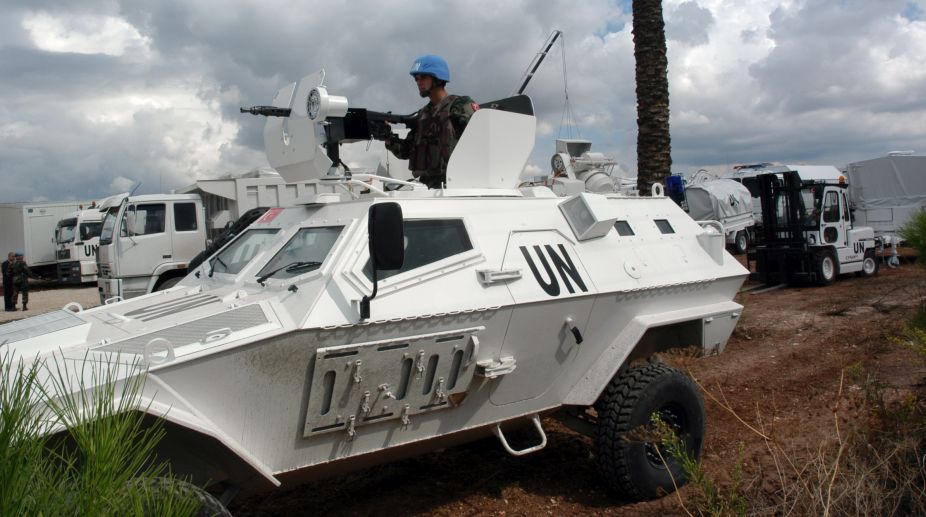India unveils maritime might with INS Surat, INS Nilgiri, INS Vagsheer on R-Day
India marked its 76th Republic Day with a grand parade down Kartavya Path, showcasing the nation's strength, self-reliance, and cultural heritage.

Representational Image (Photo: Getty)
India has suggested diverting a portion of the peacekeeping budget to the under-funded peace-building activities because there can be lasting peace only with development and political solutions.
Criticising UN peacekeeping, India’s Deputy Permanent Representative Tanmaya Lal called on Tuesday for reforming the operations to align them with peace-building objectives and finding political solutions to conflicts — a view shared by UN experts and several countries, including the US.
Advertisement
“There is an obvious lack of appropriate investment into the political dialogue and a huge mismatch between resource allocation for peacekeeping and peace-building,” he told a Security Council debate on peacekeeping and sustaining peace.
Advertisement
While this problem was acknowledged, only lip service was paid finding the resources, he said.
Lal noted that only meagre resources are now available for development programmes and peace-building is allocated less than one per cent of the funds set aside for peacekeeping.
The 2017-18 UN budget for peacekeeping operations is $7.3 billion.
Therefore, he said: “We may consider whether allocation of an appropriate percentage of funds from the peacekeeping budget to activities related to peace-building and sustaining peace in those situations could be an option to move forward to achieve sustaining peace in the various intra-state conflicts we are facing.”
“The long extending peacekeeping missions that go on for decades and elusive political solutions remind us the need to focus on long-term investment in sustainable development or institution building and inclusive political processes,” he added.
While peacekeeping operations rely on the deployment of troops contributed by member-nations to try to physically prevent conflict, peace-building and finding political solutions require civilian developmental, diplomatic and institution-building resources.
Lal welcomed Secretary-General Antonio Guterres’s idea of ensuring greater cooperation between different departments of the UN, in particular bringing together the department of political affairs and peacekeeping operations for closer internal coordination, to effectively carry out its role of ensuring peace and security.
The Chair of Advisory Group of Experts on UN Peacebuilding Architecture Review, Gert Rosenthal, pointed out that organisationally the responsibilities for peacekeeping and development were split between the Security Council and the Economic and Social Council and the General Assembly.
“While there is considerable overlapping in carrying out these functions, generally the traditional ‘pillars’ of peace, human rights and development do operate in the proverbial ‘silos’ we all sadly have become accustomed to,” he said.
“Peacekeeping missions alone cannot produce lasting peace,” US Permanent Representative Nikki Haley said.
“They can help create space for peace to take hold, but they must be a part of a larger strategy of coordinating the resources of the UN to prevent conflict to begin with and to address its causes,” she said.
Haley called for “a larger strategy of coordinating the resources of the UN to prevent conflict to begin with and to address its causes”.
Deputy Secretary-General Amina Mohammed said that the Security Council should set realistic, up-to-date mandates that also have the flexibility to evolve over time.
“Looking ahead, we must work together to ensure that peacekeeping lives up to its full potential as an essential tool for sustaining peace, not in isolation, but as part of our new, integrated approach,” she said.
Lal also drew attention to a major challenge to peacekeeping which has changed its very nature — armed conflicts taking place within a country often involving non-state actors and international terrorist networks.
A member of the UN’s High-level Independent Panel on Peace Operations, Youssef Mahmoud, acknowledged this fact. He said: “Given that the drivers of instability tend to be transnational in origin and effect, the analysis should assess the drivers of peace and conflict from a regional perspective.”
Advertisement